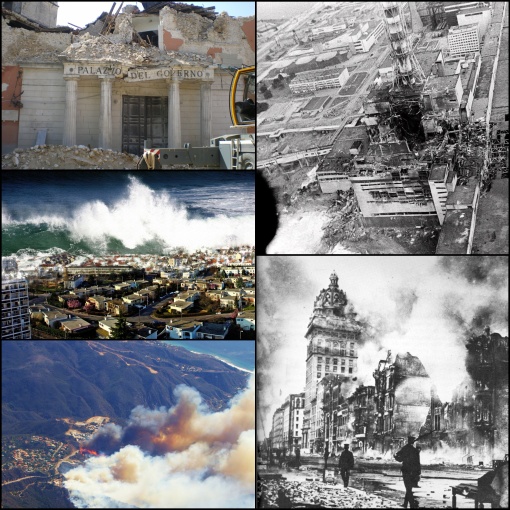Hazards and Risks area all around us no matter where we go they will always be there, but there are ways that we can understand and mitigate with respect to Mother Nature. First off a hazard is based on past events and the risks are based upon probability for the future. Some of these hazards are shown in the images above. One is a tsunami, which is caused by a displacement of water. This could be from an earthquake, volcanic activity, or arbitrary mass wasting. Tsunamis are measured by two lengths, run-up and wave height. Run up is the elevation on land that the water is pushed up on. Wave height is the height at which the largest wave got up to. To mitigate tsunamis, at least in the Pacific Ocean there are buoys and if one shows displacement a signal goes off to warn people that a possible tsunami is on the way. There is technology now that can predict, if the signal is triggered, the times and places the tsunami will hit, giving people enough time to react to the situation. Another hazard is earthquakes that are shown in the images above. Earthquakes have two different scales that they are measured by, the Mercali and the Richter scales. On the Richter scale, it usually just goes up to a magnitude of 8 but can reach 9.0 if needed. The Mercali was Italian and has 12 steps of devastation that is calculated by damage done from the earthquake. Earthquakes happen along slip faults, subduction zones, continental collisions, and dormant plate boundaries. The largest one in U.S. history was in Numadrid, Missouri but little damage was done, this was along the Madrid fault line. One of the most devastating was the one in 1906 in San Francisco, California. It happened at 5:12 A.M. on April 18th, 1906 with a magnitude of 7.7 the epicenter was two miles away from the city. Not only was the earthquake devastating but it sparked a horrific fire that tore through the city. The fire was started by a gas line that had broken, when a lady turned on the stove the morning after a fire bomb exploded burning most of the city. There is no way to predict the onset of a earthquake except for looking at past events and making a probability time line unto which it will occur. The only way is to educate people on what to do when one is happening and what to do afterwards. There is also a way of implementing building codes to help with the structures withstanding that of an earthquake. Building codes are also a way to mitigate another hazard, which are hurricanes. Hurricanes are huge storm systems that develop over warm bodies of water and hit land. Normally, the most impacted lands are the ones hit by the northeastern quadrant. Hurricanes nowadays can be seen before they hit by radar, which can inform people when they need to leave for safety precautions. Volcano eruptions are another hazard to people. There is no such thing as a true dormant volcano. Multiple problems can be seen with volcano eruptions: pyroclastic flows, gases, ash, lahars, lava, and debris. Lahars are the snowmelt that runs off and floods canal systems with muddy water. Pyroclastic flows are fast flowing burning ash and gases that are extremely fast acting and there is no out running one. There have been strides in warning people of an eruption but there is still nothing to say the exact time when an eruption will occur. These are some of the hazards that poses a threat to cities all around the world.

The usual rules…don’t attempt to identify the particular disaster, just talk about hazard and risk in each of these instances…